While following a low-carb or keto diet, you’ll inevitably come across xanthan gum. Its thickening and stabilizing properties make it an excellent substitute for corn starch and gluten in low-carb flours, breads, soups, and sauces.
However, before you start experimenting with this common keto staple, it is important to understand what xanthan gum is, common xanthan gum substitutes, its impact on our health, its uses, and how to replace it.
This is why we created this comprehensive guide to xanthan gum. In it, you will find answers to frequently asked questions, including:
- What is xanthan gum?
- Does it have any health benefits?
- Are there any health risks of consuming it?
- Is xanthan gum vegan, keto-friendly, gluten-free, etc.?
- How do you use it?
- What keto recipes use xanthan gum?
- Where should you buy it?
- How do I replace xanthan gum in a keto recipe?
- What is the difference between guar gum and xanthan gum?
What is Xanthan Gum?

Xanthan gum is a popular food additive that’s commonly added as a thickener or stabilizer. Many dressings, sauces, and non-dairy milk alternatives, for example, rely on these properties to prevent separation and increase the thickness of the product.
The production of xanthan gum involves the combination of sugars (usually from corn, wheat, and/or soy), specific micronutrients, and a group of bacterium called Xanthomonas campestris. Not only are these bacteria responsible for xanthan gum’s name, but they ferment the sugar into an indigestible soluble fiber gel as well.
This gel-like substance is then dried, milled, and ground into the powder known as xanthan gum. Once this powder is added to a liquid, it quickly disperses and creates a viscous and stable solution. This fundamental property is what makes the gum powder a great thickening, suspending, and stabilizing agent for many products, from salad dressing and gravy to keto ice cream and baked goods.
However, its artificial sounding name and widespread use in processed foods will naturally elicit some skepticism. There is no doubt that xanthan gum is useful, but is it healthy and safe? Fortunately, there has been an abundance of research conducted on this topic which we will take a closer look at below.
The Health Benefits of Xanthan Gum
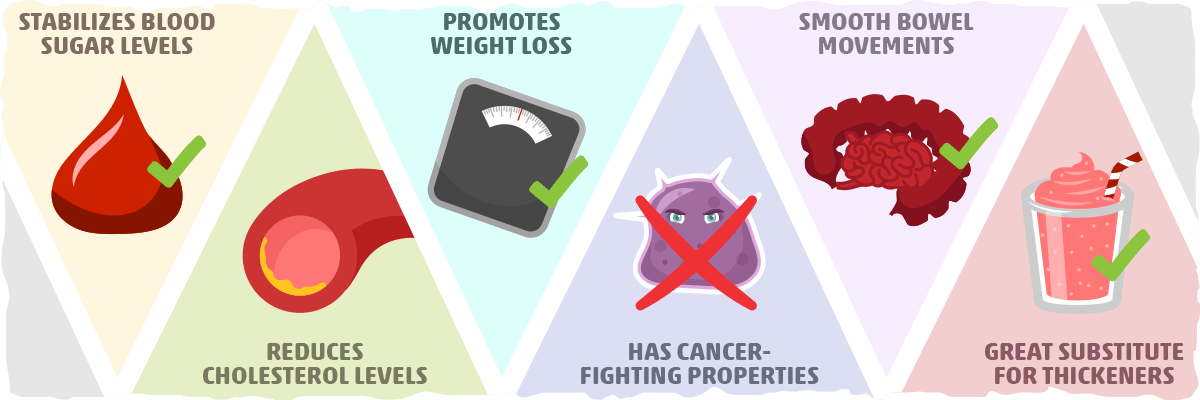
Being a soluble fiber, xanthan gum has been linked to many of the benefits that are commonly associated with fiber intake.
Some of the potential health benefits include:
- Stabilizing blood sugar levels. Several studies have found that adding xanthan gum to carb-rich meals can help prevent insulin and blood sugar spikes. Researchers believe that its ability mix with the food we eat and form a gel-like substance may also slow digestion and prevent sharp increases in blood sugar after meals.
- Reducing cholesterol levels. One study found that large doses of xanthan gum can promote subsequent decreases in cholesterol by an average of 10%. Although we don’t recommend supplementing with it for this benefit, using the gum as a food additive can help increase your total soluble fiber intake, which can help modestly improve cholesterol numbers as well.
- Weight loss. By creating a heartier mouthfeel, delaying stomach emptying, and slowing digestion, xanthan gum can help decrease overall food consumption, reduce cravings, and increase fat loss.
- Cancer-fighting properties. A study in mice with skin cancer found that it significantly slowed the growth of tumors by enhancing immune system activity. More studies are needed to investigate how xanthan gum affects humans with cancer, as well as how it impacts the growth of other types of cancers.
- Improved regularity. Xanthan gum increases the movement of water into the intestines, creating a softer and bulkier stool that’s easier to pass. Studies have found that it significantly increases the frequency and amount of stool. This may make it a helpful food additive for those who struggle with constipation.
- Great substitute for carb-ridden thickeners and stabilizers on a low-carb diet. Xanthan gum mimics the thickening properties of cornstarch and serves as a healthy replacement for gluten in keto-friendly dough. It has many other uses as well. However, before we learn about how to incorporate this versatile ingredient, we must consider the potential health concerns of xanthan gum first.
Is Xanthan Gum Bad for You? Potential Health Risks

Food additives with unfamiliar names tend to provoke skepticism and concern. Despite sounding like the name of a villain from a superhero movie, xanthan gum is relatively harmless.
There is no widespread or consistent evidence of any adverse health effects associated with xanthan gum. In fact, Many people experience modest health improvements after including this additive in their diets.
When consumed in large doses, however, xanthan gum can cause digestive issues. For example, the consumption of 15 grams or more per day was found to have the following effects in human studies:
- Changes in gut bacteria
- Increased frequency of bowel movements with softer stools
- Increased stool output
- Increased gas
Luckily, because of xanthan gum’s potency, it would be difficult to consume this much (even if you were to make only the keto recipes that called for xanthan gum).
While xanthan gum is safe for most, there are a few people that might need to avoid it. These people include:
- Those with a history of diarrhea or intense gastrointestinal pain. Xanthan gum binds moisture in the digestive tract, which can make diarrhea worse and irritate sensitive parts of the intestines.
- Those with a history of fecal incontinence. Because xanthan gum has laxative-like properties, it can significantly change the nature of your bowel movements and make them more difficult to control.
- Those with xanthan gum-related allergies. People with a history of adverse reactions to xanthan gum or the ingredients used in its production should use the alternatives found later in this article.
- Those who are severely allergic to cruciferous plants. Xanthan gum is typically made from the bacteria that live on cruciferous vegetables (such as Brussels sprouts, kale, and broccoli). Thus, some xanthan gum products may be contaminated with some of the compounds that can provoke an allergic reaction.
- Those with severe wheat, gluten, corn, soy, or dairy allergies. Xanthan gum is commonly produced using sugar derived from wheat, corn, soy and/or dairy. People with severe allergies to these products may need to avoid foods containing xanthan gum unless they can find an allergen-free source.
- Premature infants. Simply Thick, a xanthan gum-based thickener, was added to formula and breast milk for premature infants. In several cases, the infants developed a life-threatening disease that causes the intestines to become inflamed, damaged, and start to die. While Simply Thick is safe for use in adults, infants should avoid it since their guts are still developing.
- Those taking blood sugar lowering medications or planning surgery. Xanthan gum can lower blood sugar levels, which can be dangerous for people who take certain diabetes medications. There is also concern in the medical community that it might interfere with blood sugar control during and after surgery. Because of this, it may be best to minimize xanthan gum consumption at least 2 weeks before a scheduled surgery.
Overall, there is little evidence that xanthan gum is harmful for most people. Aside from its potential to trigger allergic reactions or worsen existing digestive issues in some people, it is safe to eat as a food additive and may even be beneficial for health.
Other Common Concerns: Is Xanthan Gum Keto-friendly, Vegan, Gluten-free, Non-GMO?
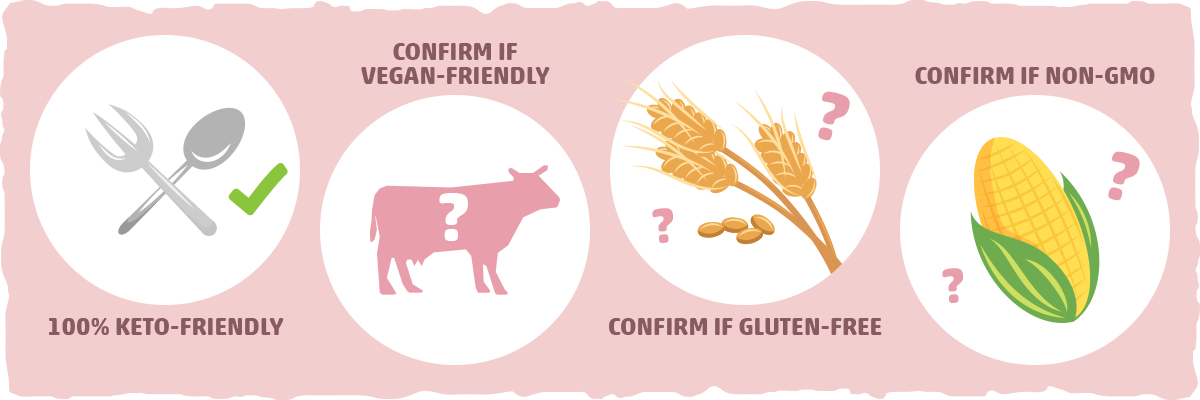
After learning about the process of xanthan gum production, a few dietary concerns come to mind. Although the additive is an insoluble fiber in itself, the ingredients used to create the gum powder may render it unsuitable for certain people.
Is It Keto-friendly?
Despite the fact that sugars are a crucial component of xanthan gum production, none of these net carbs make it into the final product. Simply put, xanthan gum is 100% keto-friendly and doesn’t have any net carbs in it.
Is It Vegan?
The answer to this question is mostly yes. However, there are some companies that use dairy-derived lactose, whey, and/or other dairy by-products as the substrate that the bacteria ferment to create the xanthan gum.
For this reason, it is best to confirm with the manufacturer that the xanthan gum is produced using vegan-friendly ingredients.
Is It Gluten-free?
Most xanthan gums are created using corn feeds, but a significant amount use sugar derived from wheat starch. If you have celiac disease or gluten sensitivity, make sure to confirm that the product is gluten-free before use.
Is it GMO-free?
Many common genetically modified crops like corn and soy may be used to produce xanthan gum as well. If you prefer to buy a GMO-free product, it is best to check for a “Non-GMO project” logo or confirm with the manufacturer that they use non-GMO ingredients.
The Many Uses of Xanthan Gum: A Keto Cook’s Secret Weapon
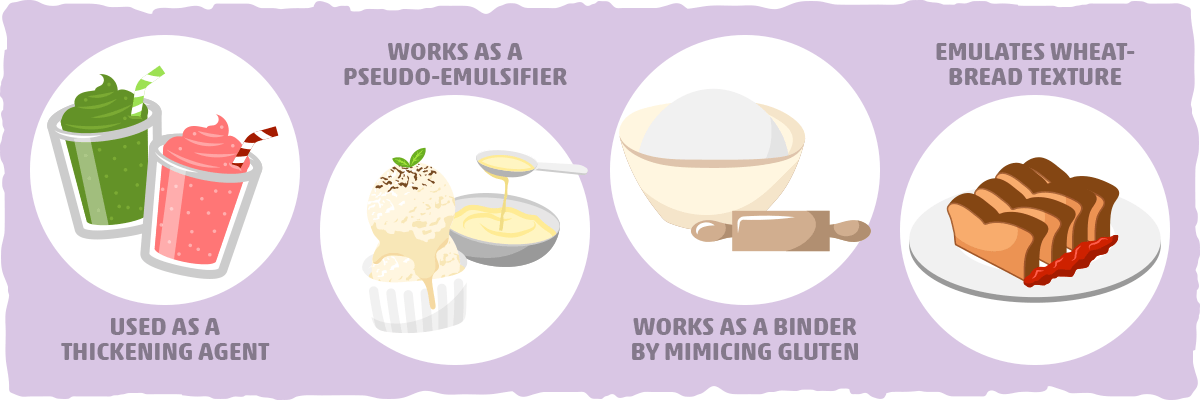
Because of its unique properties, xanthan gum is one of the most versatile ingredients for gluten-free and low-carb cooking. Here are some of its most common uses:
As a thickening agent — It commonly added to toothpaste and some other products to keep them uniformly thick. On the keto diet, xanthan gum’s thickening properties can be used to make soups, smoothies, and condiments satisfyingly viscous.
As a pseudo-emulsifier — Xanthan gum can help prevent water, oil, and solid particles from separating. This is why you will find it in some oil-based salad dressings and cosmetics. It is used to create a homogenous ice cream base for many keto ice cream recipes as well.
As a binder — Xanthan gum mimics the effects of gluten by turning the dough gummy and sticky. This enables the ingredients to bind together and traps the gas bubbles created by the leavener you use. The result is a low-carb dough that rises in a way similar to conventional dough.
As a way to improve texture — One of the secrets to emulating the texture of wheat bread with keto bread is by using keto-friendly ingredients with a similar texture and mouthfeel. We use xanthan gum for this purpose in many of our baked items. As an example, our Keto Sausage Gravy and Biscuit Bake relies on the gum powder to help create a keto-friendly biscuit topping that mimics the real thing.
The best part about xanthan gum is that a small amount can go a long way. Keto recipes usually only call for 1.5 teaspoons or less — with most requiring just a 1/2 teaspoon — so you’ll get a lot of mileage out of your purchase.
Xanthan Gum Recipes for the Keto Diet: Practical Examples of Its Many Uses
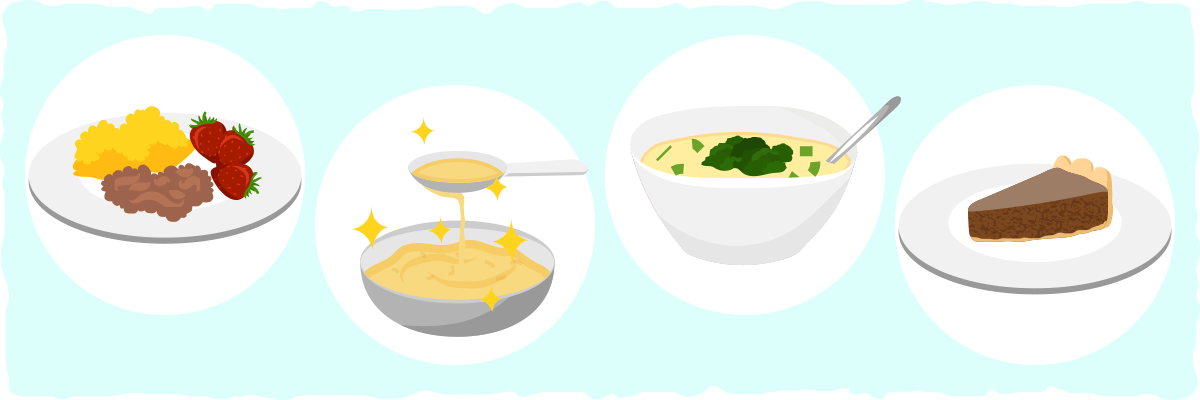
To give you a better idea of how its versatility translates to keto recipes, let’s take a look at some delicious sweet and savory dishes that rely on xanthan gum’s properties:
Savory Keto Recipes with Xanthan Gum
Biscuits and gravy are hard to get right without the help of carb-ridden flours and starches. This is where xanthan gum really shines through with its ability to mimic the properties of gluten in the biscuit topping while providing the thickness necessary to make a satisfying gravy.
Simple, delicious, and comforting, this soup is a great keto staple for lunch, dinner, or as an appetizer. Without the help of xanthan gum, this soup would not have the thickness and heartiness that we want from a rich soup like this.
Xanthan gum is a key ingredient behind transforming your favorite Chinese takeout dishes into healthy, keto-friendly recipes. With this Chinese-inspired beef and broccoli stir fry, all you’ll need is a small amount to thicken the sauce, so each morsel is covered in flavor.
Sweet Keto-friendly Recipes with Xanthan Gum
Keto-friendly maple syrup would be nearly impossible to muster without the help of xanthan gum. The flavor extracts, water, butter, and coconut oil in this recipe simply would not hold together without the emulsifying and stabilizing properties of our feature ingredient. It also adds the viscosity we expect from fresh maple syrup.
Xanthan gum can be used to create the perfect keto-friendly crust as well. In our chocolate silk pie, it helps prevent the crust from getting too dry and gives it a fulfilling mouthfeel with each bite.
With the right keto ingredients, you can blend up a quick dessert shake or satisfying meal replacement. However, instead of relying on sugary ice cream or frozen fruit for thickness, use a dash or two of xanthan gum. This way, you can keep it keto-friendly with the perfect milkshake consistency.
Where and How to Buy Xanthan Gum — Online and In-Store Options
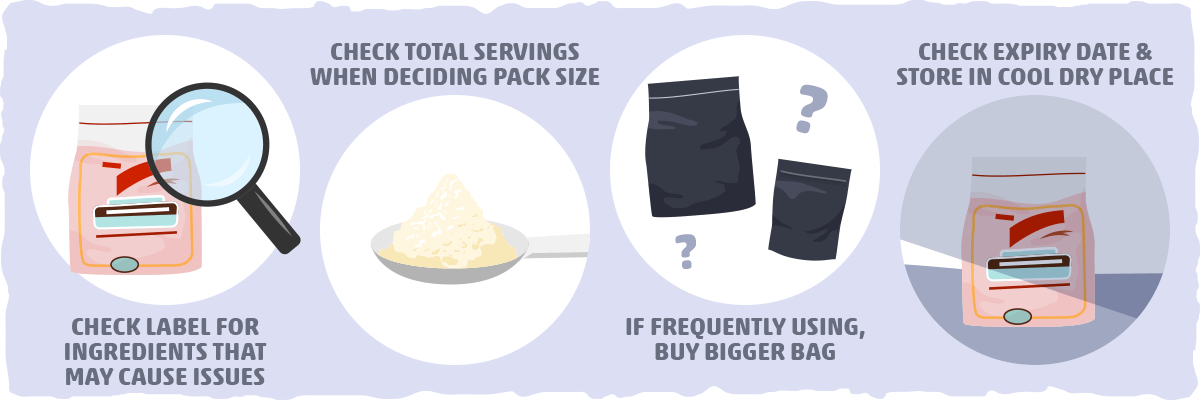
Xanthan gum can be found in most larger grocery store chains, natural food stores, and big-box stores like Walmart and Target. Generally, it is going to be stocked in the baking aisle but may be found in the gluten-free section depending on the store.
If your local establishment doesn’t carry it, you can find dozens of different xanthan gum products online. Amazon.com, for example, has a product for seemingly every preference.
However, before you add xanthan gum to your cart, make sure to consider these factors:
- Dietary preferences, food allergies, and food sensitivities. Check the label and/or confirm with the manufacturer that they don’t use any ingredients you are trying to avoid.
- How many “servings” the product provides. Keto recipes that use xanthan gum will typically call for between 0.5 and 1.5 teaspoons for multiple servings. Since 1 teaspoon roughly equates to 3 grams, you will get ~9 ⅓ teaspoons per ounce of xanthan gum. Use this estimate to help you figure out what amount you should buy.
- Frequency of use. Keto-friendly smoothies, creamy soups, gravies, casseroles, baked goods, and ice creams tend to call for it, so if you plan to make these items frequently, then you may want to buy a bigger bag. That being said, those who rarely use xanthan gum may also find a bulk purchase to be the better option since it has a long shelf life.
- Expiration date and storage. Xanthan gum products typically have a shelf-life of three years when stored in a cool, dry place (with less than 60% humidity).
After taking these points into account, finding the right product for you among the plethora of options will be much easier. If you are still not sure how much to buy, you may want start with the cheaper option that fits within your dietary preferences, and give yourself a few weeks to figure out how much you’ll end up using on average.
Xanthan Gum Substitutes For The Keto Diet
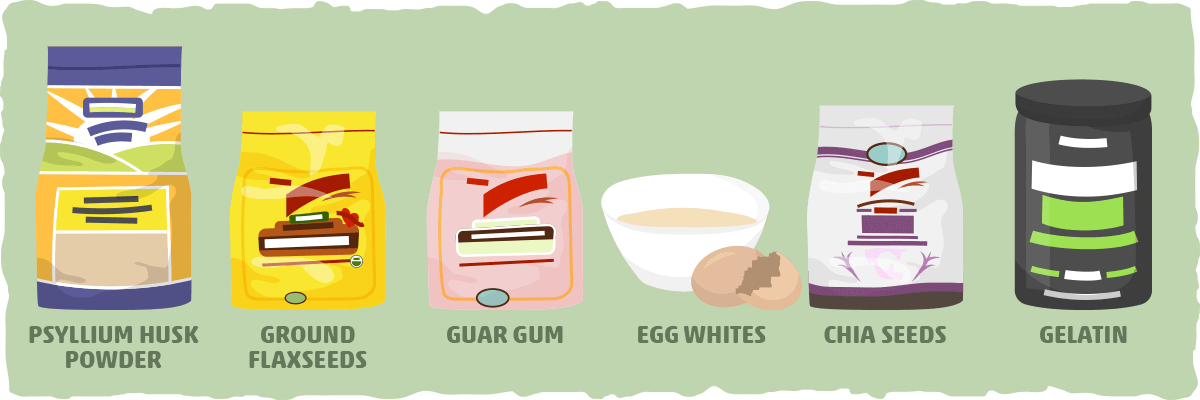
There are several ways to replace xanthan gum in your recipes if you don’t have any on hand. Certain substitutes will work better than others depending on what you are making and the properties you are trying to mimic.
In general, the following substitutes will work best for baking and for thickening shakes/smoothies, but they won’t work as well as xanthan gum for gravies, sauces, condiments, and casseroles. Regardless of what alternative you use, it may take some experimentation to get it right.
Here are some of the most commonly used keto-friendly replacements for xanthan gum:
Psyllium Husk Powder
When these husks are ground up, they make a soluble fiber-rich powder that can serve as an excellent thickener and binding agent when exposed to water. This is a great option for keto-friendly dough that helps it hold together and provides a fulfilling texture similar to whole wheat bread.
As a replacement for xanthan gum, use roughly the same amount or slightly more of psyllium husk powder. To find the precise amount, work it into your dough — as you would with xanthan gum — until it has the desired texture.
Ground Flaxseeds (Flaxseed Meal)
Ground flaxseeds do a great job of binding ingredients together and mimicking some of gluten’s properties by adding moisture and softness to your baking. This is why we use flaxseed meal in many of our keto bread recipes.
To replace xanthan gum, try using the same amount of ground flaxseed mixed with two times the water. For example, If a recipe calls for 1 tablespoon of xanthan gum, use 1 tablespoon of ground flaxseed plus 2 tablespoons water.
Chia Seeds
When mixed with water, these seeds turn into a thick gel similar to egg whites. This chia seed gel can be used to help give structure to keto breads and pastries or thicken shakes and smoothies.
To replace xanthan gum, try using a mixture of one tablespoon of chia seeds with three tablespoons of water for every tablespoon of xanthan gum. You may need to increase your baking time by 15 minutes if you use this substitute.
Chia seeds can also be used in place of xanthan gum for keto smoothies and drinks.
Egg Whites
Not only can they be used to help bind ingredients together, but they can also help them rise. This makes egg whites an excellent substitution for xanthan gum in low carb cakes, quick breads, and other batter-based baked goods.
Use one egg white for every tablespoon of xanthan gum in these recipes. Keep in mind that your finished product will be very light and airy, and you may need to use a larger pan.
Gelatin
Derived from the collagen in animal tissue, gelatin forms a jelly-like mixture analogous to Jell-O. Although small amounts are commonly used to thicken up sauces, smoothies, and mousses, it can also enhance the stretchiness and moisture-retaining qualities of dough.
To replace xanthan gum with gelatin, follow a 1:2 ratio — i.e., substitute 1 teaspoon of xanthan with 2 teaspoons of unflavored gelatin.
Guar Gum
This gum is commonly mistaken for xanthan but is technically a different substance despite sharing many of the same properties.
Guar gum is extracted from the guar bean, which is native to tropical Asia. As a result, guar gum is 100% gluten-free, non-GMO, and vegan. Like xanthan gum, guar gum consists of soluble fiber and doesn’t contribute any net carbs to the diet.
If you’d like to use it as a replacement for xanthan gum, use 1 1/2 times the amount that the recipe calls for.
However, before using this alternative, it is important to know the different properties of these two gums. Guar gum, for example, should not be used in any recipes with high acid content and works best at cooler temperatures. We will take a closer look at these unique properties in the next section.
Xanthan Gum vs. Guar Gum — What is the Difference?
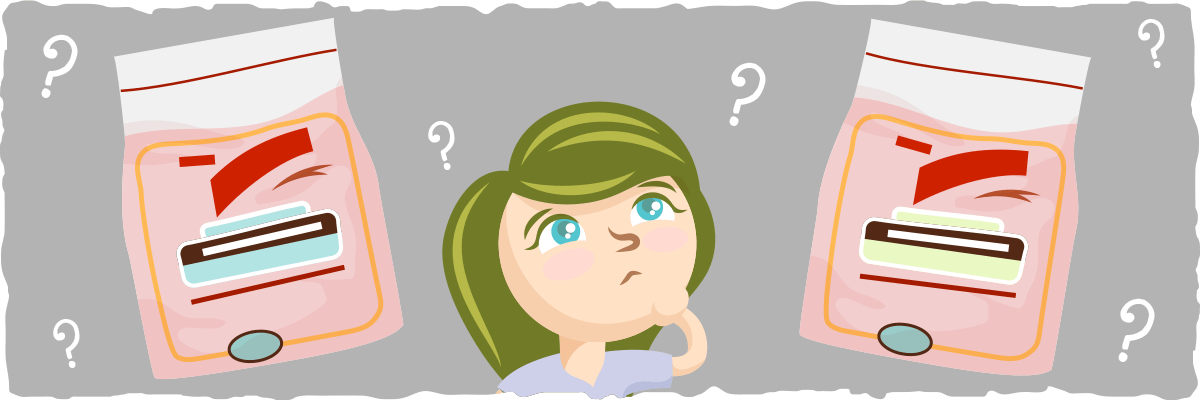
Guar gum is the primary alternative for xanthan gum and can serve as a simple allergen-free option. It has many of the same properties as xanthan, including the ability to thicken, stabilize, and emulsify.
When mixed in an acidic solution, such as lemon juice or vinegar, guar gum loses some of its thickening potential. For keto recipes involving ingredients like these, you will want to use xanthan gum or increase the amount of guar gum used.
Additionally, guar gum doesn’t combine well with hot liquids. If you are looking to add it to a hot mixture, it is best to mix it with cold liquids or oil first.
In general, because of there differing properties, guar gum will work best if used in cold foods such as ice cream, popsicles, or pastry fillings, while xanthan gum is better for baked goods, casseroles, and gravies. If you’d like to learn more about guar gum, feel free to read our in-depth article What is Guar Gum?
Putting It All Together — Xanthan Gum for Keto
Xanthan gum is a keto dieter’s secret weapon. It can be used to thicken, stabilize, bind, and emulsify, serving as a great substitute for gluten and cornstarch. Plus, it is an excellent source of soluble fiber with many potential health benefits.
Before purchasing this versatile additive, make sure to confirm that the manufacturer doesn’t use any ingredients during production that you are trying to avoid. Many xanthan gum products will contain traces amounts of gluten, soy, corn, and/or animal products, so keep that in mind before you add it to your diet.
If, for any reason, you need a replacement from xanthan gum, there are plenty of options you can use to mimic some of its properties. For example, flaxseed meal and psyllium husk powder are ideal for keto breads and many other baked goods, while guar gum works best in cold foods.
No matter how you choose to use xanthan gum (or its alternatives), it can serve as a healthy and helpful ingredient in your keto kitchen.
If you are looking for more information regarding common ingredients in keto baking and how to replace them, our guide to keto flour substitutions will help you find what you need.
Sources
- Xanthan gum: production, recovery, and properties — ScienceDirect
- Review of xanthan gum production from unmodified starches by Xanthomonas comprestris sp. — ScienceDirect
- Xanthan gum biosynthesis and application: a biochemical/genetic perspective. — NCBI
- Cholesterol-lowering effects of dietary fiber: a meta-analysis — The American Journal of Clinical Nutrition
- Xanthan Gum — Is This Food Additive Healthy or Harmful? — Healthline
- The effect of feeding xanthan gum on colonic function in man: correlation with in vitro determinants of bacterial breakdown. — NBI
- Production and characterization of xantham gum by Xanthomonas campestris using cheese whey as sole carbon source — ScienceDirect
- XANTHAN GUM — WebMD
- Guar Gum vs. Xanthan Gum — Bob’s Red Mill
- Gelatinization of wheat starch as modified by xanthan gum, guar gum, and cellulose gum — USDA
- SHELF LIFE INFORMATION — TIC Gums
- The effect of in vitro digestive processes on the viscosity of dietary fibres and their influence on glucose diffusion — ScienceDirect
- Use of xanthan gum in dietary management of diabetes mellitus. — NCBI
- Oral administration of xanthan gum enhances antitumor activity through Toll-like receptor 4. — NCBI
- Effect of Xanthan Gum on Blood Sugar Level after Cooked Rice Consumption — Food Science and Technology Research
